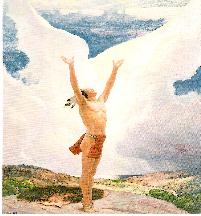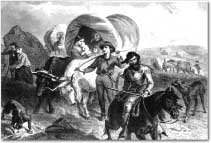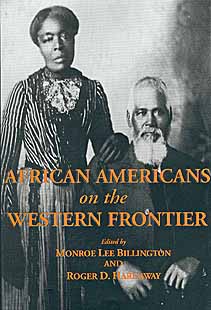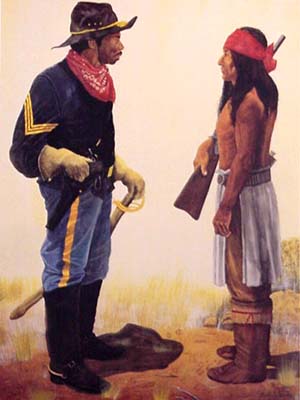Hosted free by tripod.com
Start you.tube Dances with wolves (soundtrack)
|
~Michael Appert's collection~ theme from Dances With Wolves starring Kevin Costner and Graham Greene |
Americans have long been enchanted by the story of our nation's West, but what is often missed, is that beneath the popular tales and stereotypes, there is a saga of stamina and sheer survival with roots deeper than most of the public would imagine. Horace Greeley quoted the Bible: God creates in order to populate. (Isaiah 45: 18). But where would the populators come from? They weren't all "yankees" like in some fifties TV western. MANY backgrounds were represented. Here, for you to peruse, are a range of links to articles and pictures around the web. |
 Our West has MANY stories
Our West has MANY storiesONLINE RESOURCES

I. WINTU AND OTHER INDIGENOUS PEOPLES LINKS


 African Americans on the Western Frontier
by Monroe Lee Billington and Roger D. Hardaway.
African Americans on the Western Frontier
by Monroe Lee Billington and Roger D. Hardaway.
During the last half of the nineteenth century, several thousand African Americans moved to the American western frontier. Before the Civil War, some went west to California as slaves of gold miners and to Utah as slaves of Mormons. Later, free black men joined the U.S. Army and served in frontier outposts while others were hired on as cowboys on western ranches and cattle trails. Once Reconstruction ended in the South, discrimination and segregation caused more African Americans to seek better opportunities elsewhere where prejudice was less evident. The significant role played by African Americans in the settlement and development of the West has largely been ignored and neglected until now. African Americans on the Western Frontier remedies that historic neglect with fifteen essays that explore the contributions that African American men and women made to the western frontier-as miners, homesteaders, town builders, entrepreneurs, and as ordinary, civic-minded citizens. |
To return later, bookmark now
If you find broken links, have a link to be listed, or need your link cancelled
please email me:

Clash of Two Cultures
Acknowledging a Tragic Collision
two distinct anthropologies ~ two ways of life
|
Guenter Lewy writes:
The violent collision between whites and America's native population was probably unavoidable. Between 1600 and 1850, a dramatic surge in population led to massive waves of emigration from Europe, and many of the millions who arrived in the New World gradually pushed westward into America's seemingly unlimited space. No doubt, the 19th-century idea of America’s"manifest destiny" was in part a rationalization for acquisitiveness, but the resulting dispossession of the Indians was as unstoppable as other great population movements of the past. The U.S. government could not have prevented the westward movement even if it had wanted to. In the end, the sad fate of America's Indians represents not a crime but a tragedy, involving an irreconcilable collision of cultures and values. Despite the efforts of well-meaning people in both camps, there existed no good solution to this clash. The Indians were not prepared to give up the nomadic life of the hunter for the sedentary life of the farmer. The new Americans, convinced of their cultural and racial superiority, were unwilling to grant the original inhabitants of the continent the vast preserve of land required by the Indians’ way of life. The consequence was a conflict in which there were few heroes, but which was far from a simple tale of hapless victims and merciless aggressors. To fling the charge of genocide at an entire society serves neither the interests of the Indians nor those of history.
For More : Clash of Two Cultures |


 |
last save 12.23.11
site created by
Bob Shepherd